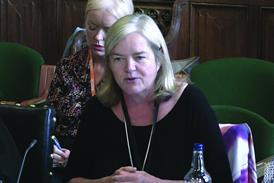It would be a mistake to let planning law drive the shape of London’s local democracy.
This week the planning team at law firm Addleshaw Goddard published ‘A forward-looking planning manifesto’, the eye-catching proposal of which is the creation of five London boroughs in place of the current 32 (33 if you count the City of London Corporation).
The compelling side of the manifesto , as Addleshaw Goddard partner Marnix Elsenaar writes in the introduction, is the view that ‘fresh thinking is needed to prevent the planning system hindering both our economic and social future’.
‘All around us,’ Elsenaar continues, ‘projects of national significance are stalled amid debate, political wranglings and legal tussles as vested interests are fought over and key decisions delayed.’ The 2012 Olympics were delivered ‘efficiently and on budget’ in part because they were not subject to such problems.
So far, so good. But it would be a mistake to let planning law drive the shape of London’s local democracy. ‘Strategic planning’, has a chequered history in our towns and cities.
I recall one lawyer friend I shared a flat with picking up a second-hand book from the 1960s on planning – a tome that made the case for better strategic planning in our cities.
Much of the book was devoted to London, and it abounded with photos taken from the air where rows of Victorian houses had been critically ringed in white, and the words ‘piecemeal development’ written beside them. In other pictures non-piecemeal six-lane motorways had been drawn over photos in the same white pen, cutting a satisfactory neat swathe through the old piecemeal Victorian street.
Of course, various ‘tussles’ ensured that much – including flyovers that would have destroyed some of London’s finest period streets – did not get done. But look at multi-lane roads that bisect central Glasgow, or the redevelopment of Portsmouth town centre, and you can see what would have occurred.
The Planning Manifesto had its origins in a roundtable discussion that included housebuilders, developers, local government planning experts and planning consultants.
A look at London’s skyline makes it easy to see why developers prefer ‘strategic’ decision-making. As mayor Ken Livingstone was a fan of ‘tall’ – Boris Johnson is a convert to it. On the stretch of the river from Southwark to Lambeth, towers of a controversial height are the result of centralised planning – decisions that frequently over-ruled the position taken by local councils.
As architect Herbert Baker wrote to his co-designer of India’s New Delhi in the 1930s: ‘Such a scheme would be impossible in a democracy – hurrah for despotism!’
Currently the local government planning process is one of few areas of government that brings citizens close to the decision-making process. The many local councillors I know who have sat on planning committees talk with conviction about the satisfaction of making an accountable decision in public (and contrary to the belief in central policy-making circles, they rarely go against legal advice – proposals are not refused ‘on a short-sighted political whim’).
Often there would be a compromise allowing a development to go ahead. Architects and developers, of course, don’t like compromises – they like easy plots, fairly straight lines, and old stuff cleared out the way. ‘Strategic’ and ‘convenient’ can look pretty similar, depending on your agenda.
Relevant here is the much-discussed fact that dysfunctional things are currently happening to London’s property market – from tall towers in the centre to inflated property prices in the suburbs – the capital city is one of those locations that has become a secure money-box for global capital in an uncertain world.
In arguments around planning, this money-box function has somehow become conflated with economic growth – even though it reduces labour mobility and increases business costs.
That is surely an error.
Of course, we need not have stasis on important projects. Crossrail has public support, and I see evidence of its progress all across the capital – and its proposed extension will likely happen because it will be popular.
That is because Crossrail’s case has been well-made in public.
A faster cross-Pennines train route could go ahead for the same reason. HS2, by contrast, is either an error of policy or communication.
Why am I exercised by a 16-page document that includes just seven pages of text and a lot of pictures? In short because there is a general election next year, and lobbying that includes words like ‘economic growth’ and ‘simplification’ tends to get traction on the left and right in politics.
So watch this area – I’m sure there will be much more in this vein. In planning terms strategic thinking and despotism are not automatic bedfellows – but that doesn’t mean that planning law won’t be reformed on the assumption that they are.
Eduardo Reyes is Gazette features editor






























2 Readers' comments